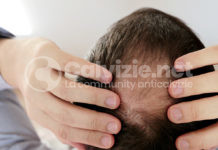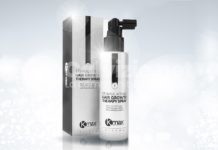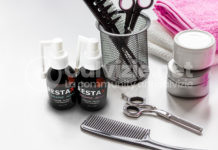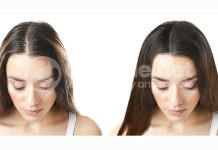Minoxidil, taken orally, has been used for decades in the treatment of vascular hypertension. The most startling and unpredicted side effect was hair growth. A reversal of male pattern baldness with oral minoxidil was first reported in the American medical literature by Zappacosta (1) in 1980. In 1981, Fiedler-Weiss (2) reported on the use of topical minoxidil for the treatment of alopecia. Subsequently, many reports on the use of topical minoxidil have been published, using minoxidil concentrations of varying strengths.
Studies have shown that topically applied solutions of 2% to 5% minoxidil are effective in initiating and promoting vellus hair growth and some terminal hair growth on the scalps of individuals with male pattern alopecia (3). Increases in hair follicle length can be demonstrated following topical treatment with minoxidil (4). It is important to note that minoxidil-stimulated regrowth of terminal hairs is dose-dependent. In a study at the University of Illinois, using 1% and 5% topical minoxidil solutions, 42% had response to 1% minoxidil and 84% had response to 5% minoxidil. Multiple large series studies have been reported using 2% and 3% topical minoxidil solutions. The mean time to response did not appear to be dose-related and ranged from one to nine months with the mean at 2.3 months. Even with stronger solutions of minoxidil, there are no accounts of significant systemic effects. Side effects of topical minoxidil appear to consist entirely of cutaneous reactions such as transient mild irritation or pruritis.
Because minoxidil is soluble in water only to 2%, the base vehicle had to be modified to accommodate concentrations of minoxidil up to 5%. The 3%, 4% and 5% minoxidil solutions may have more of a drying effect on the scalp and the solution may leave a small residue at the application sites. In a placebo-control clinical trial with 3857 patients, other than local dermatologic events, no individual reaction or body system side effects were increased in the minoxidil treated group as compared to the placebo group.
Allergic contact dermatitis has been reported (5), but may be due to the vehicle rather than minoxidil. No major systemic side effects have been attributed to topical minoxidil therapy. According to the prescribing information provided by Upjohn for the use of Rogaine, an effort was made to explore the potential for systemic effects of topical minoxidil (1,2 and 5%) applied twice daily. The results were compared to oral doses (2.5 and 5 mg given once daily) and placebo. Since normotensive patients have little or no blood pressure response to minoxidil at doses of 10 mg per day, hypertensive patients were used for this double-blind controlled trial.
The results showed detectable blood pressure decrease in the group taking 5 mg oral doses. No other group had a clear effect. The failure to detect evidence of systemic effects during treatment with topical minoxidil reflects the poor absorption of topically applied minoxidil, which averages about 1.4% (range 0.3 to 4.5%) from normal intact scalp. In summary, higher concentrations of minoxidil are more effective in promoting hair growth and do not have systemic side effects.
(1)Zappacosta AR: Reversal of baldness in a patient receiving minoxidil for hypertension. N Engl J Med 303:1480-1481, 1980
(2)Olsen EA, Weiner MS, Delong ER, et al: Topical minoxidil in early male pattern baldness. J Am Acad Dermatol 82:90-93, 1984
(3)Weiss VC, West DP, Mueller CE: Topical minoxidil in alopecia areata. J Am Acad Dermatol 5:224-226, 1981
(4)Weiss VC, Uno H, Buys CM, et al: Histologic and immunopathic profiles in alopecia totalis patients receiving topical minoxidil (1% and 5%). J Invest Dermatol 84:360, 1985
(5)Tosti A, Bardazzi F, DePadova MP, et al: Contact dermatitis due to minoxidil. Contact Derm 13:275-276, 1985





























